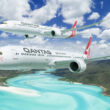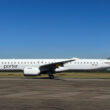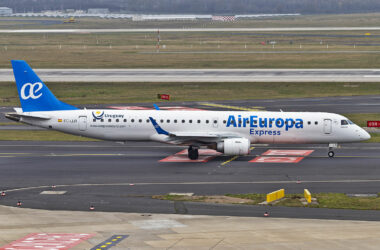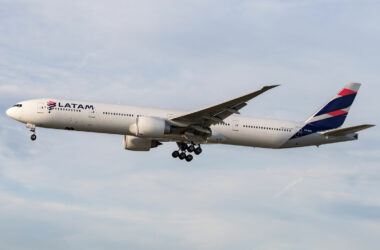Boom Supersonic, the US company that develops the “successor” to the Concorde, announced today that it has completed the development stages to perform the first flight of the XB-1 demonstrator.
Similar to a fighter, the XB-1 is a supersonic prototype built to test and validate the technologies that will be used in the Overture, a passenger plane that will be able to fly at more than 1,800 km/h (Mach 1.7).
Earlier this year, the demonstrator was transferred from Boom’s facility in Centennial, Colorado, to Mojave Air & Space Port, California, to continue preparations for the flight. The company says that during this period the aircraft underwent ground tests, including the first taxi tests.
The XB-1 is the first aircraft proposed to fly above the speed of sound designed independently and without government funding. The only commercial supersonic jets of the past, the Concorde was funded by the UK and French governments, while the Tupolev Tu-144 was developed by the former Soviet Union.
“The recent progress made towards XB-1’s first flight reflects the team’s collective efforts to build and safely fly the world’s first independently developed supersonic jet,” said Blake Scholl, Boom Supersonic’s founder and CEO.

Permission to fly
In addition to moving forward with ground testing, the XB-1 recently received an experimental airworthiness certificate from the Federal Aviation Administration (FAA). With this approval, the demonstrator is authorized to take off and fly through a test area.
Boom pilots Bill “Doc” Shoemaker and Tristan “Gepetto” Brandenburg also received letters of authorization from the FAA to fly the XB-1.
Follow ADN: Instagram | Twitter | Facebook
“It’s fitting that XB-1 is now progressing toward first flight at the Mojave Air & Space Port, home to more than 50 first flights and other significant aviation events,” said Shoemaker, who is Boom Supersonic’s chief test pilot. “I’m looking forward to flying XB-1 here, building on the achievements of other talented engineers and pilots who inspire us every day to make supersonic travel mainstream.”

In preparation for the flight, Boom test pilots completed hundreds of hours in the simulator for aircraft evaluation, operations development, training and human factors assessments.
The aviators also maintain flight proficiency in a T-38 Talon aircraft, a training jet that will accompany in flight all the XB-1 air tests, informed Boom.
Super demonstrator
Boom’s technology demonstrator is powered by three GE J85-15 turbojet engines with afterburners. Older versions of this engine are used, for example, in Northrop F-5 Tiger II fighters.
Another highlight of the XB-1 is the fuselage and wings built with carbon fiber, a light and very resistant material.

The slender aircraft intends to put into practice concepts developed by Boom not only to overcome the sound barrier but also to confirm the reduction of the sonic boom, an indispensable requirement for the final version of Overture to be able to fly over inhabited areas at speeds of Mach 1.7 without causing pollution noise and other nuisances.
Conceived to carry between 65 and 80 occupants, the Overture could mark the return of supersonic aircraft to commercial passenger transport.
Despite delays, Boom plans to introduce the aircraft to the market by 2029. Although it is still a long way from the first flight, the Overture has firm orders and purchase options from American Airlines, Japan Airlines and United Airlines, as well as two others. unidentified customers.






